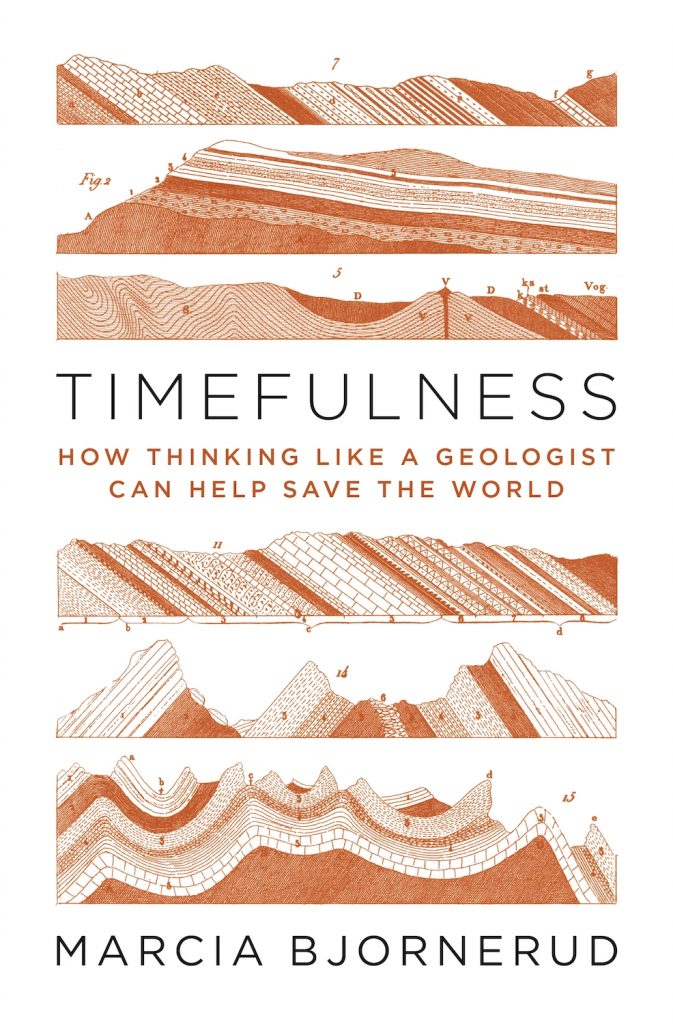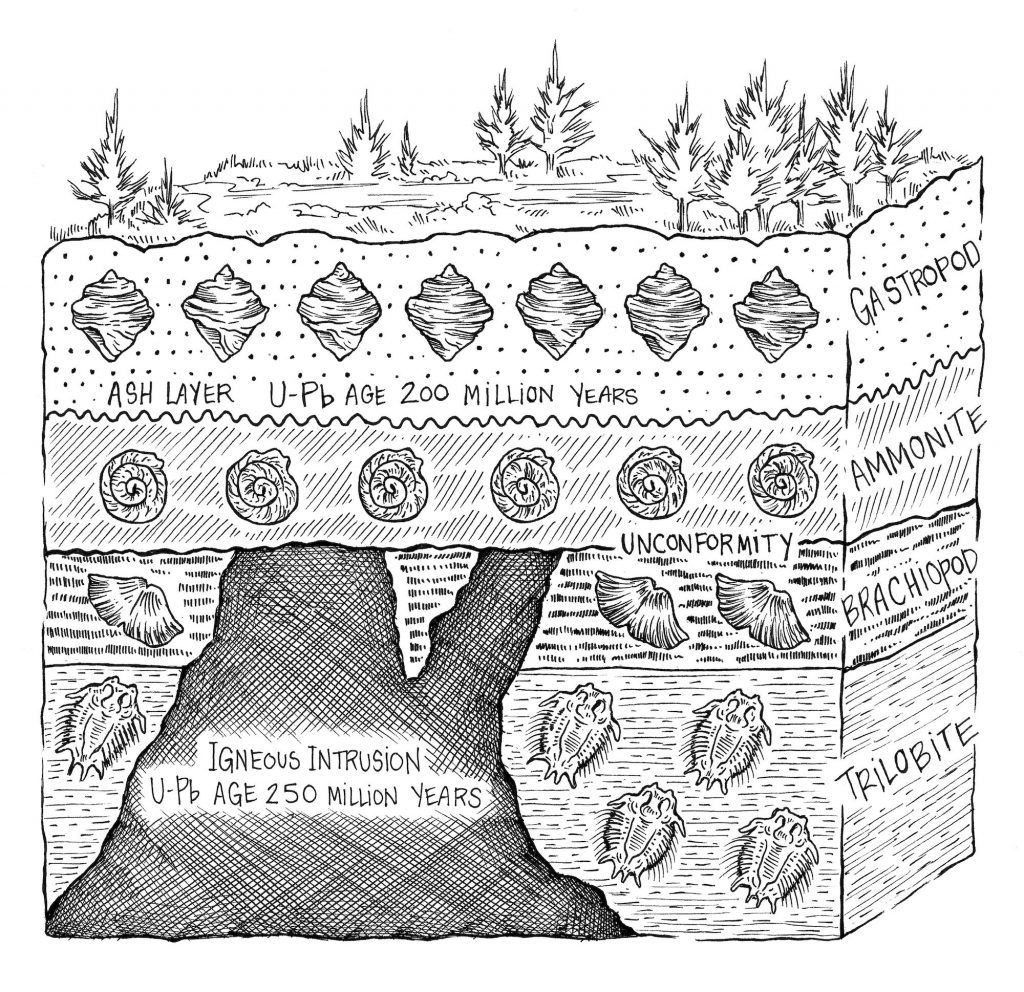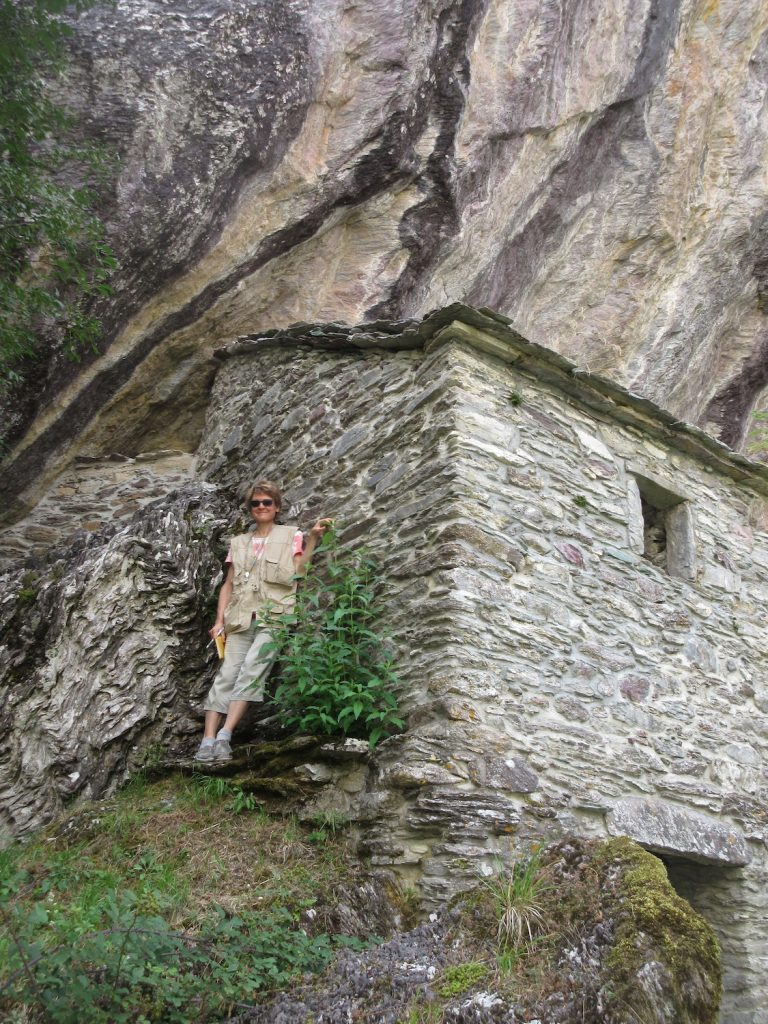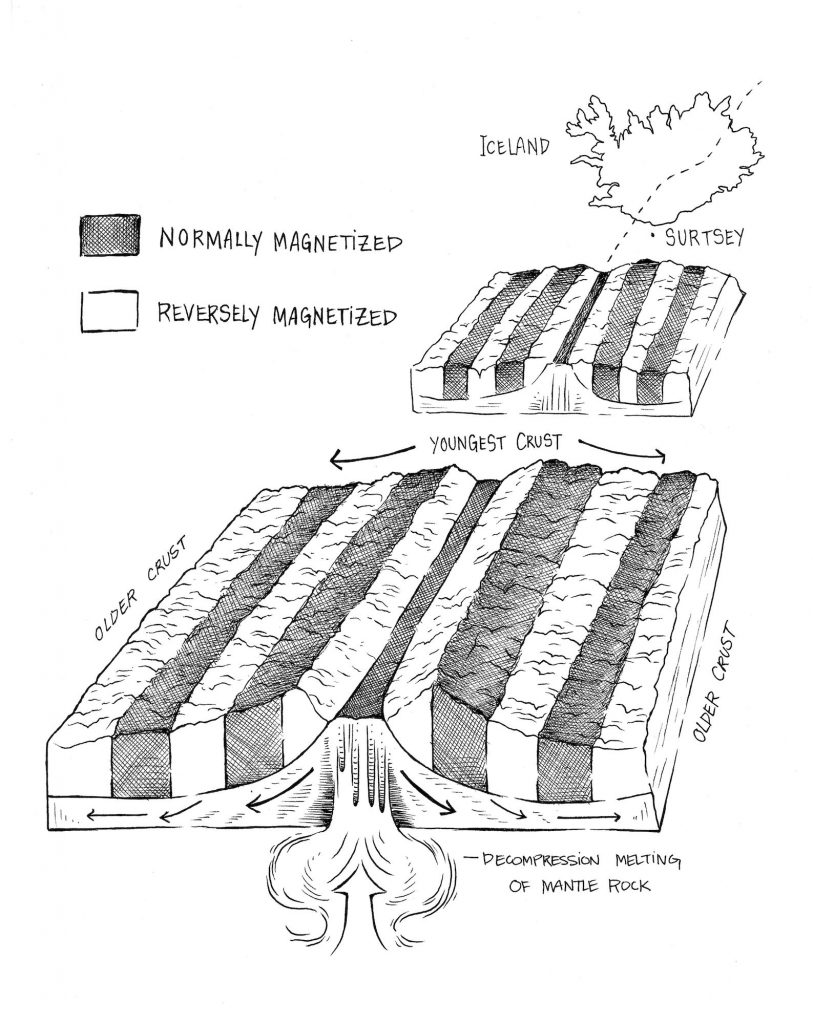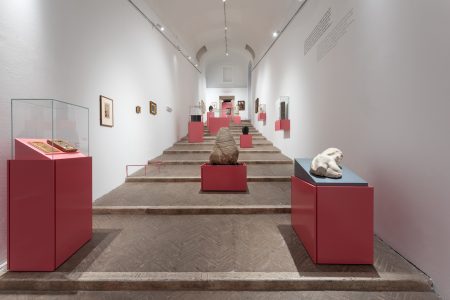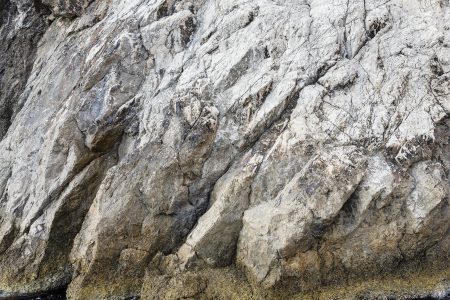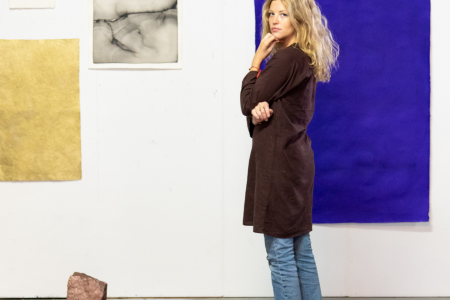Marcia Bjornerud: Sedimentary Thoughts
For TLmag34: Geology of Being, Amy Hilton spoke with Professor Marcia Bjornerud about her book “Timefulness”and how rocks are permeated with stories and record time.
Chip away at a rocky matrix, open up a geode and immediately a crystalline world will be revealed. Doing this immediately exposes underlying truths. Look deeply into nature, attempt to read stones, and our dreams are endless. For geologist Marcia Bjornerud, rocks are “not nouns, but verbs.” Not only do they teach us the language of solidity, but they are permeated with stories; they record time. Bjornerud proposes that an understanding of time is fundamental in this epoch of accelerating planetary change, presenting viable solutions for a more “time-literate” society. And, her own literacy is as poetic as it is philosophical, expanding humbly on personal experiences while exploring broader scientific knowledge that she has acquired throughout her career. Exquisite in its entirety, her book “Timefulness” compels us to shift our thinking towards a much deeper questioning about our own place in time and our inter- connected relationship to the Earth itself – the recognition of the fundamental interdependence of all phenomena, and the fact that as individuals and societies we are profoundly embedded within the cyclical processes and rhythms of nature. A perception of reality that, at times, goes even beyond the scientific framework, this book adheres to those sacred ideas about the oneness of all life.
TLmag: Time is consequence, suspense, morality, mortality. I have often pondered if it is time that translates our lives into sequence, into meaning. What sparked your initial interest in geology? Were there any particular thinkers, poets, scientists or even family members who have been of inspiration for you?
Marcia Bjornerud: Like many geologists, I stumbled into the field more or less by accident. I do recall as a first grader being fascinated by Surtsey – a new volcanic island formed off the coast of Iceland in the 1960s. In school we watched a black and white film showing spires of steam and hot ash shooting out of the cold north Atlantic as the island was born. It suggested a secret life force inside the stony-faced Earth that terrified and thrilled me. But no one said: People called geologists study such things. And in my middle and high school, like most in the U.S., geology was entirely absent from the science curriculum. Moreover, the fact that every science teacher in our school was male drummed out of me any nascent thought that I might become a scientist. In my first year of college I was intending to major in languages or linguistics, with some ill-formed and naïve idea of becoming a translator, and I signed up for Geology almost on a whim. I didn’t have a car, and the field trips sounded like a nice chance to get out of the city. But I found that geology was a different kind science than I had been exposed to in school. It called for a type of whole-brain thinking I hadn’t encountered before. It demanded a humanities-like close reading of the texts of the natural world. It involved the rigorous application of physics and chemistry to wild and unruly things like volcanoes and oceans. Above all, geology required a vivid but disciplined imagination – the capacity for visualization across great expanses of time and space. And I saw its vast explanatory power. I had always been fascinated with word origins – windows into past ways of seeing the world. But geology provided something even grander – it was nothing less than the etymology of the world itself!
TLmag: You say that geology is a worldview, a way of seeing the world in four dimensions. Can you describe what it is like to see through a geological lens?
MB: An apt metaphor for geologic thinking is a palimpsest manuscript. In medieval times, texts written on parchment – a commodity that required a lot of labour to produce – were often scraped and re-inked. Always, though, some vestige of the older text remained. Similarly, landscapes have their histories written all over them, scraped by erosion and overwritten many times. Once you become attuned to the earlier scribbles, it’s impossible not to see them. Early in an introductory geology class, one begins to understand that rocks are not nouns but verbs – records of processes. And contrary to public perceptions, geology is as much about the future as the past. When one learns how to listen, the natural world is constantly communicating its memories of earlier times – which are simultaneously predictions about what lies ahead. Seeing through a geologic lens is what I call ‘Timefulness’: an awareness of the rich natural history that envelopes us; a sense that we too live in geologic time, and are part of a continuum from the planet’s past into its future. Timefulness is deliberate counterpoint to Timelessness – an unattainable, sterile, and even dangerous idea.
TLmag: In “Timefulness”, you posit that many of us humans have no real sense of temporal proportion, that as a species we maintain a general disinterest and partial disbelief in the time before we appeared on this planet. You say that we are in a sort of “time denial”. Could you expand on that?
MB: Yes, quite simply, we live in a Time-illiterate society. We would be shocked if an educated adult had no idea where the continents were on a global map but don’t seem bothered by the fact that few average people have a good sense of the ‘geography’ of the planet’s past. Even though we will spend our entire lives here, we behave like bad tourists on Earth, enjoying its amenities and ransacking its bounty without ever having noticed that it has its own ancient language and customs. Many of the environmental problems we face have arisen because we collectively lack a sense for the durations of chapters in Earth’s history, the rates of geologic processes like groundwater or the intrinsic timescales of natural phenomena like climate change. In our culture, Time Denial – what could be called chronophobia – is rampant and comes in many varieties, arising from different sources. The most obvious and vocal is, of course, young-Earth creationism, which in my view actually demeans the Creation – the natural world – by espousing a dumbed-down fable rather than the truly rich, awe-inspiring saga of how Earth has evolved over time. A dangerous counterpart to young-Earth dogma is Apocalypticism, whose adherents believe in a foreshortened future. If you think the world will end soon, then there is no need to conserve anything or be concerned with environmental degradation — in fact, not using up natural resources would be wasteful. But at least Young Earthers and Apocalypticists are completely open about their aversion to Time. More insidious forms of time denial are woven into the fabric of our culture. Our natural existential dread of aging and death has become entangled with vanity, through capitalistic messaging in a society obsessed with youth. As a result, we fear and loathe our timey-ness. Making us afraid of time is big business; time denial is a lucrative industry. It must be acknowledged that science itself is culpable for other strains of time denial. In the hierarchy of sciences, it is telling that the ‘pure’, that is timeless, eternal ones – physics especially but also chemistry – are most esteemed, while biology and geology, which reek of time and evolutionary history are by implication ‘impure’. In this Nobel awards season, I’m also reminded that there’s no Nobel Prize in geology (though there is one in economics!). I respect the accomplishments of other sciences – geology is in fact a highly interdisciplinary field that necessarily draws on the principles and methods of physics, chemistry and biology. But many of the environmental problems we now face are the result of the failure, in the early to mid-twentieth century, of chemists, physicists and engineers to anticipate how new technologies – the internal combustion engine, chemical fertilizers, antibiotics, plastics — would interact over time with complex, evolving natural systems.
TLmag: Norwegian philosopher and environmentalist Arne Naess believed that the essence of what he coined as ‘deep ecology’ is “to ask deeper questions”. Similarly, you write about obtaining a profoundly closer, more clear-eyed observation of our place in time, of the different depths and sedimentary layers that constitute ‘Deep Time’ – from the shallows of the Ice Age to the abyss of the Archean Eon. How significant, and perhaps urgent, do you feel it is for us to begin to dig into this notion of Deep Time?
MB: Modern geology is actually a strange hybrid of the pragmatic and philosophical. Geology addresses not only important practical questions – yes, where to find resources, and how to protect people from natural hazards – but also deep, existential ones: Where do we come from? Why is the Earth the way it is? What factors favour resilient, stable ecosystems and societies? Both kinds of inquiry are important to humans, and both require a keen sense of temporal proportion – the relative and absolute durations of the great chapters in the planet’s past, the characteristic rates and timescales of natural phenomena. Arguably, the most valuable commodity geology has produced is arguably the long view of Earth and life through time. Reconstructing Earth’s past from the raw rock record is one of humanity’s great intellectual achievements. Yet this is vastly underappreciated, probably because it wasn’t accomplished by a solitary genius – but instead built up incrementally by thousands of unsung scientists over the past two centuries. I recognize that some people feel diminished by geologic time, that humans are made insignificant by it – and I can understand that. But I think it’s useful to adopt the Greek distinction between chronos – raw time — billions and billions of years – and kairos, which is time within in a narrative. As one starts knowing earth’s story and those vast stretches of geologic time are filled with narratives – protagonists and plotlines – it’s no longer alienating; The characters become familiar, the themes resonant. Once we open a few volumes in the library of Deep Time, we can begin to recognize ourselves in the tales of earlier Earthlings. Indeed, I find the idea of a young, six-thousand year old Earth with a short, shallow story positively terrifying. Knowing that we live on an old, robust, resilient planet, amidst the enveloping presence of so many ancestors is, to me, deeply comforting.
TLmag: You compare the pace of solid earth processes such as mountain formation and erosion with more unstable rhythms of the ocean waves and the atmosphere. Is it true that mountains grow at rates that can now be measured in real time?
MB: Yes – satellite-based measurements allow us to see plates moving and mountains growing. These processes are slow, but not so slow as to be beyond our own experience. The most leisurely tectonic plates move about as fast as our fingernails grow (a 2-4 cm per year), while the speediest move about as quickly as our hair grows (more than 10 cm per year).
TLmag: Where are we now on the geological time scale? And why is this precept of timefulness so vital now?
MB: Some time in the last century we crossed a tipping point at which rates of environmental change caused by humans outstripped those governed by many natural geological and biological processes. That threshold marks the start of a proposed new epoch in the geologic timescale, the Anthropocene. The term was coined in 2002 by Paul Crutzen, a Nobel prize-winning atmospheric chemist, and it quickly entered both the geological literature and popular lexicon as shorthand for this unprecedented time when the behaviour of the planet bears the unmistakable imprint of human activity. Most geologists think these stark facts more than justify the adoption of the Anthropocene, not only as a useful concept but also as formal division of the geologic timescale, on par with the Pleistocene (the Ice Age, 2.6 million to 11,700 years ago) and the Holocene (essentially, recorded human history). The magnitudes of human-induced planetary changes, ‘achieved’ in less than a century, are on par with those in the great mass extinctions that define other boundaries in geologic time. With the exception of the end-Cretaceous meteorite impact, however, those events unfolded over tens of thousands of years.
A subtler point for geologists is that the idea of the Anthropocene represents a fundamental break with one of the philosophical underpinnings of the field, the concept of uniformitarianism: the idea that Earth’s past and present are not disjunct domains governed by different ‘rules’ but instead linked through the continuity of geologic processes. In fact, the early 19th century foundational treatise for the discipline, Charles Lyell’s “Principles of Geology”, was a polemic intended to dissuade readers from the idea that geologic changes happened faster in the past than present. The Anthropocene now inverts this idea by emphasizing how processes are faster in the present than the past. The use of the word ‘glacial’ to mean ‘imperceptibly slow’ is quickly becoming an anachronism; today, glaciers are among the most rapidly changing entities in Nature.
TLmag: How we can learn to stand together, as strong and as solid as granite or as a mountain core itself towards a more sustainable future, particularly in such uncertain times? Is there any advice that you might offer to world leaders?
MB: In these dark times, it is therapeutic to imagine what an Earth-literate, timeful society might look like. In his last public interview, Kurt Vonnegut said “I’ll tell you…one thing that no Cabinet has ever had is a Secretary of the Future, and there are no plans at all for my grandchildren and my great-grandchildren.” Let us adopt Vonnegut’s suggestion as our first proposal: a representative for the yet-to-be born to serve among the top advisors to Presidents and Prime Ministers. Departments of the Future would be guided by the Iroquois Nations principle that no decisions should be undertaken without consideration of their effects on the next seven generations. This would set in motion a profound realignment of priorities in all aspects of society. Tax incentives and subsidies would be rebalanced to reward long-term stewardship over short-term exploitation. Putting a price on carbon might help us get a grip on our fossil fuel addiction, sober up, and let us prepare for natural disasters that will happen without our assistance – like the hundreds of large earthquakes that will happen around the globe in the next century – rather than expending resources on self-created climate catastrophes. Public school teachers and others whose work represents an investment in the future would be paid well and held in high esteem. Geology would be fully integrated into science curricula, perhaps serving as a ‘capstone’ course in which students would apply concepts of physics, chemistry and biology to the immensely complex Earth system. With a solid understanding of how the planet works, students would go on to become educated voters who would hold public officials accountable for wise governance of water, land and air. We would begin to view ourselves as primarily as Earthlings – citizens of Earth – and would become receptive to the deep wisdom the planet has to share with us. In every stone, it offers an eternal truth or good rule of thumb; in every leaf, a prototype power station; in every ecosystem, a model of good urban planning; in every watershed, an exemplar of a healthy economy. There is a teaching attributed to the eighteenth century Polish rabbi Simcha Bunim, that for me carries great wisdom: One should carry two slips of paper; one in your left pocket, that reads ‘I am ashes and dust’; the other, in the right pocket, that says ‘The world was made for me’. Both are true.
Somewhere between the poles of existential despair and narcissistic self-absorption lies the path that will take us to a place of peace.
This interview originally appeared in our A/W 2020 issue: TLmag34: Precious: A Geology of Being.
Read Jörg Bräuer’s recent conversation with Marcia Bjornerud about his new series of work, Capri Lithologie.
